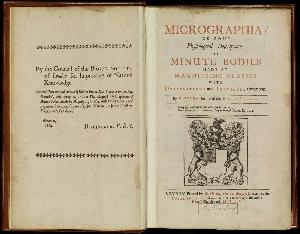Robert Hooke (1635-1703)
Robert Hooke (1635-1703);Robert Hooke
Place: Freshwater
Born: 1635
Death: 1703
Biography:
Robert Hooke was an English polymath who was active as a physicist ("natural philosopher"), astronomer, geologist, meteorologist and architect. He is credited as one of the first scientists to investigate living things at microscopic scale in 1665, using a compound microscope that he designed. Hooke began his scientific career as an assistant to the physical scientist Robert Boyle. Hooke built the vacuum pumps that were used in Boyle's experiments on gas law and also conducted experiments. In 1664, Hooke identified the rotations of Mars and Jupiter. Hooke's 1665 book Micrographia, in which he coined the term cell, encouraged microscopic investigations. Investigating optics – specifically light refraction – Hooke inferred a wave theory of light. His is the first-recorded hypothesis of the cause of the expansion of matter by heat, of air's composition by small particles in constant motion that thus generate its pressure, and of heat as energy. In physics, Hooke inferred that gravity obeys an inverse square law and arguably was the first to hypothesise such a relation in planetary motion, a principle Isaac Newton furthered and formalised in Newton's law of universal gravitation. Priority over this insight contributed to the rivalry between Hooke and Newton. In geology and palaeontology, Hooke originated the theory of a terraqueous globe, thus disputing the Biblical view of the Earth's age; he also hypothesised the extinction of species, and argued hills and mountains had become elevated by geological processes. By identifying fossils of extinct species, Hooke presaged the theory of biological evolution.



